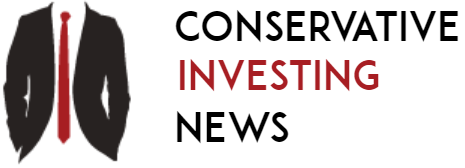The July 9 deadline for Donald Trump’s tariff war with the rest of the world was TACOed overnight. With the end of Trump’s pause on his flip-flop tariffs just days away, his Treasury Secretary Scott Bessent flagged that the pause would be extended to August 1.
“President Trump’s going to be sending letters to some of our trading partners saying that if you don’t move things along, then on August 1, you will boomerang back to your April 2 tariff level,” Bessent said in the US overnight.
Bessent’s announcement was a double TACO — the original pause on the “Liberation Day” tariffs was justified as enabling scores of countries to rush to Trump, bend the knee and negotiate new trade deals that would halt the “reciprocal” tariffs (in fact, it was in response to a threatened surge in US Treasury bond rates).
No trade deals — in the commonly agreed sense of the term — have been negotiated. Something called a US-UK trade deal was announced, but it has virtually no substance. Last week’s deal with Vietnam is more of an agreement to work toward a deal. As yet another deadline shift indicates, the rush to Washington was more in the Mad King’s demented mind than in reality.
That deadline shift — which could of course be abandoned in five minutes — relieves the Reserve Bank of a particularly unfortunate coincidence: its meeting this week would have occurred in similar circumstances to the now notorious RBA meeting at the start of April, literally hours before Trump set the world economy aflame with his “Liberation Day” tariffs.
In one of the worst RBA decisions in decades, the bank ignored Trump’s entire history and reiterated its commitment to tariffs and held interest rates, even as inflation was falling quickly and demand was being smashed in Australia.
As markets slumped and the world teetered on the brink of a Liz Truss-style disaster playing out in Washington after “Liberation From Reality Day”, workers and households had to wait six weeks for the RBA to accept the idiocy of its decision and cut rates on May 20. No apology has been forthcoming from governor Michele Bullock, the new Monetary Policy Board, or, for that matter, the AFR, with its incessant demands for rate hikes.
Until last night, this week could have seen a repeat: the RBA meeting to consider rates on the eve of Trump pressing play on his mad trade war. What’s also different this time is the very strong expectation that falling inflation will push the RBA to cut rates. Even the AFR galahs seem glumly resigned to rate cuts.
The Australian Bureau of Statistics’ monthly inflation indicator for May fell to an annual level of just 2.1%, the bottom of market forecasts (2.1% to 2.5%), while the trimmed mean inflation estimate fell from 2.8% in April to 2.4% in May. Both are well within the bank’s target range of 2% to 3% over time, and both are at multi-year lows.
Confirming how awful the RBA’s April decision was, retail sales fell 0.1% in April from March, ending three months of gains. Retail sales for May showed anaemic growth of 0.2%; annual growth had fallen from buoyant growth of 4.6% last December to 3.3% in May.
But such is the ideological zealotry of the RBA that it could look and still refuse to jump, like a steeplechaser shying at an easy fence. A few inflation hawks in the grotty recesses of the commentariat have tried to find reasons. Some wondered if the rapid rise in oil prices past $US75 a barrel after Trump’s bombing campaign of Iran might see the RBA wait for the next quarterly inflation number, released on July 30. Disappointingly for the hawks, oil prices rose well above $US75 a barrel and then dropped very sharply in a day and a half to around $US65-66 a barrel.
A persistently strong labour market could also be invoked as grounds for maintaining higher-than-necessary rates — except that such a labour market isn’t the product of cyclical forces but a permanent structural shift that means Australia, like other countries, is going to face persistent labour shortages for the rest of the century (or at least until AI achieves self-awareness and wipes us all out because of a far-right conspiracy theory).
Or there are persistently strong capital markets: equities have boomed and bond yields fallen in the US and elsewhere, despite earlier fears about the huge US debt bill after Trump’s massive “One Big, Beautiful Bill” increase to the US deficit. Big US and foreign investors have, for the moment, stopped caring about the historic level of US debt, or Trump’s continuing attacks on the Federal Reserve and its chair Jay Powell. Perhaps they believe the debt surge and a subservient Fed after Trump’s 2026 nomination of a replacement for Powell means easy money and lower rates for years to come.
The problem with this line of argument is that the RBA is not starting from an “all things being equal” position. It stuffed up last November when it failed to cut interest rates as the trajectory of inflation in Australia became obvious. It spectacularly, culpably failed in April. We’re at least one rate cut behind where we should be, and likely more. If they’re not going to apologise for botching their core job so badly, Bullock and co must at least indicate their regret by not brooking any further delay for Australians.
